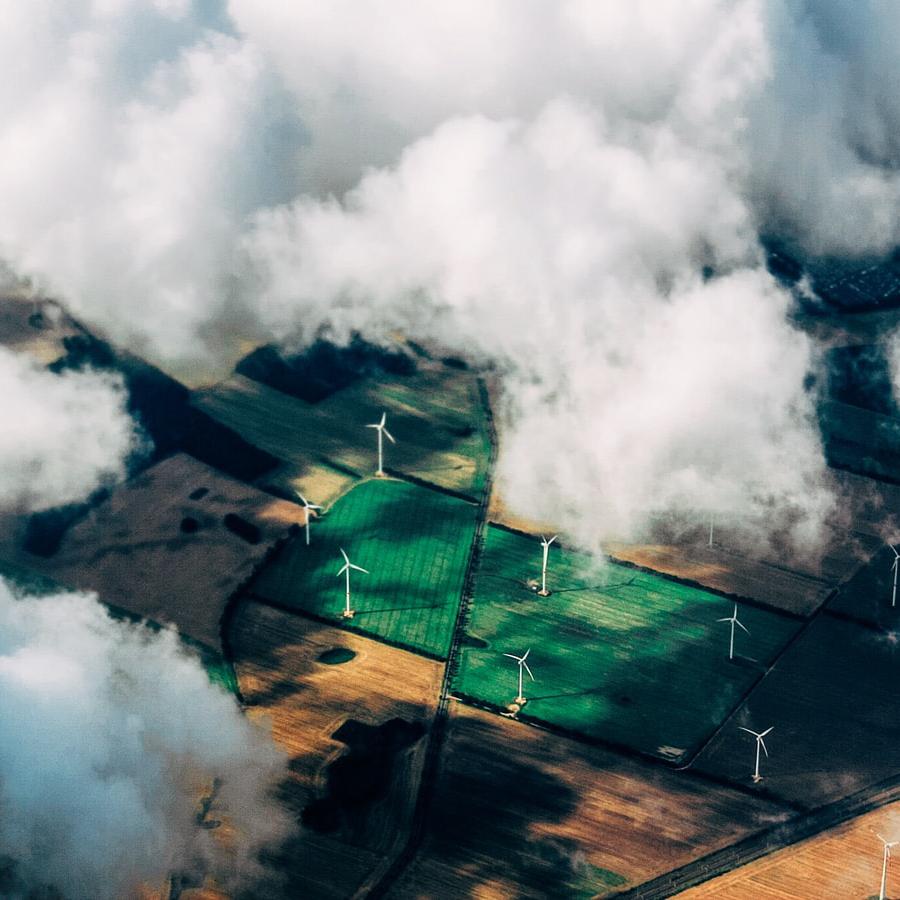Thinking
The Interbrand view: A dramatic
shift to a new reality


Let’s face reality: 2020 was no picnic.
A global pandemic that forced unprecedented shifts in society, and the resulting economic crisis, challenged governments and business to quickly adapt and pivot to a world in which a new paradigm was emerging.
A bifurcated world of two workforces: one remote and digitally connected, the other on the front line of the pandemic, undertaking physical labor and performing vital services. In both cases, technology that previously existed but was slow to be adopted became the urgent investment and ‘mission critical’ infrastructure for operations. Technology in the form of fully automated services, diagnostics, tracking, tele-conferencing, cloud-based data sharing and predictive analytics became the ‘new normal’ in place of offices, bricks & mortar retail, in-person team workflow and consultation services.
Surviving, thriving
In particular, the three sectors that were transformed with the immediacy of the survival instinct were financial services, medicine & healthcare as well as education. The shift to virtual and remote collaboration and data-aggregation meant that for these industries customers shifted expectations of service and personalization. Behind the changes to all of these sectors were brands that leaned into their technology and data-analytics in order to provide seamless, personalized, accurate and efficient engagement. The use of cloud-based AI and algorithms enabled many brands to now establish an even more personal and informed view of their customers on an individual and collective basis. The ability to process vast amounts of transactional data and correlate that data into practical services, solutions and in many cases, subscription offers enabled brands to become agile and proactive. In a few short months, organizations used technology as the primary means of responding to the pandemic’s effect of shuttering the world and limiting physical access, exchange and interoperability. Technology enabled a transition to new forms of workflow and collaboration that previously was impeded by bureaucracy, concentrated work-resources and old-fashioned management hierarchies. By September of 2020, all of these old tenets of pre-COVID workflow had been upended.

The difficult pivot
Certain sectors and industries suffered greatly and were unable to pivot so successfully. Their very nature of business was based upon the physical presence and interactions of human beings. This includes the travel and leisure sector; hospitality and food catering; Entertainment; and Health Clubs & Spas. However, even many of these brands turned to technology to redefine their business and operational model. Travel & Leisure introduced new forms of health & safety protocols while reconsidering the type of business and operational infrastructure they require. Hospitality and restaurants shifted to homedelivery and grocery with a focus on D2C operations. Entertainment industries rapidly shifted to purely on-line distribution and new forms of content production. Health and leisure products and services moved on-line by encouraging home-based products and services to cater to the workforce that effectively needed to transform their homes into multipurpose functionality.
As consumers, we became locked down and tech-enabled in order to shop for groceries, educate our children (and ourselves), monitor our health, connect with others and generally appreciate the quality of life and our home living arrangements. We travelled less and reduced our dependency on the automobile or public transport and began to appreciate the ‘break’ from our busy lives while also seeing the benefits to a less congested, noisy and noxious fume infested world. This ‘break’ showed us the potential of new energy and ‘green’ solutions to combat our addiction with fossil fuels and carbon emissions. It gave us hope to consider how we can fight climate change with more sustainable industry. Technology showed us a new path to resilience and ingenuity, and new ways of collaborating across distance, borders and infrastructural challenges. The pandemic forced us to consider the impact of a fragile earth and human population across the supply chain of food and essential goods; healthcare and medicine; and digital enabled networks and communications requirements. The importance of a connected and secure 4G/5G infrastructure alongside the ability to process data in real-time from ‘the edge’ to ‘the cloud’ to ‘our devices’ has now redefined the infrastructure necessary for growth and commerce in the future.
Smart means clean
The ‘last green mile’ of delivery for goods and services will be the catalyst for shifting commercial vehicle fleets in mobility as the unprecedented demand for logistical efficiency to meet demand without the negatives of noxious emissions. Smart cities and smart traffic infrastructure will now propel EV thinking and zero-carbon footprint transport to the top of government agendas for infrastructure investments. By 2030, the advanced economies of the globe will be embracing a fully automated and EV infrastructure that will offer a dramatic decrease in noise and noxious fume pollution. The automated aspects of AI connectivity through edge sensor computing and robotics will expand into all aspects of industry and commerce. Increasingly, factory production will require less human labor and be more automated and efficient.
Technology innovation will drive new products and services as well as supply chain efficiencies across every industry. Combined with higher safety and hygiene protocols, ‘smart’ production and distribution will enable business operations to manage resources more efficiently with less waste while also guaranteeing higher quality of performance and delivery. This new dimension to business is being referred to as AI Engineering. AI Engineering allows businesses and brands to drive scale through more reliable predictive business models and management of resources. Combined with hyper-automation, this will enable business to optimize customer or consumer contact while connecting demand forecast and delivery to inventory and manufacturing production. Technology will thus streamline and optimize both B2B and B2C management.


Data-driven demand
The Internet of Things will now become the Interconnection of Data, which in turn will drive new behavior for both consumers and the business enterprise. On-line search, marketing, purchase and services will become the de-facto behavior and modus operandi for all commercial activity. The digital marketplace and on-line media platforms and channels will facilitate the sales and marketing process. Data rich insights and customer personalization will allow data tracking and targeting with a higher degree of precision and customization. Adding to this, SMART algorithms based on our individual preferences, behaviors and transactions will shape everything from home security and energy management to personal grooming and beauty-care regimes. Our lives will be self-tracked, monitored and managed enabled by subscription-based business models for every aspect of goods and services. Thus, technology and innovation will lead to a new era of brand growth with new requirements for success. At the intersection of consumer behavior and demands, the economics of growth opportunities and the ability for brands to generate demand and value is the role technology can play to transform legacy infrastructure and thinking into a more innovative and efficient world.
But as consumers place more trust and faith in technology to help them navigate choices and fulfil demand, brands must equally now step up their investment in greater transparency, flexibility and accountability. Brands exist based upon trust, and trust in data will need to be defined by manifestations of cybersecurity and data protection. Digital surveillance of consumers will be either regulated or restricted by government legislation or consumers themselves. Privacy concerns related to all aspects of a tech-enabled world, from transactions to health data will be of paramount importance in selecting brands and integrating their services or offer into our lives. The vectors of technology and brand experience will converge around the issues of personal identity, privacy and protection. We are already seeing data protection, security and privacy emerge with the widespread distrust of social media algorithms and demand for consumer determined permissions.
The year of opportunity
As the total experience of demand across customer experience, user experience, employee experience and community experience has greater impact on our world, we will also see the need for brands and organizations to be more proactive and mindful of their purpose, values and commitments to a more sustainable and ethical world. The social unrest and demand for diversity, equity and inclusion that coincided with the pandemic brought to the forefront the need for companies and brands to be accountable across more than just the demand fulfilment aspect of commerce. AI Engineering and leadership of brands must now hardwire trust, transparency and ethics into their codes of compliance and performance. 2021 will be the year of opportunity to begin to embrace the power of technology to transform our lives not only in response to a global crisis, but rather to embed and sustain new and better ways of living, working and producing value for individuals and society.